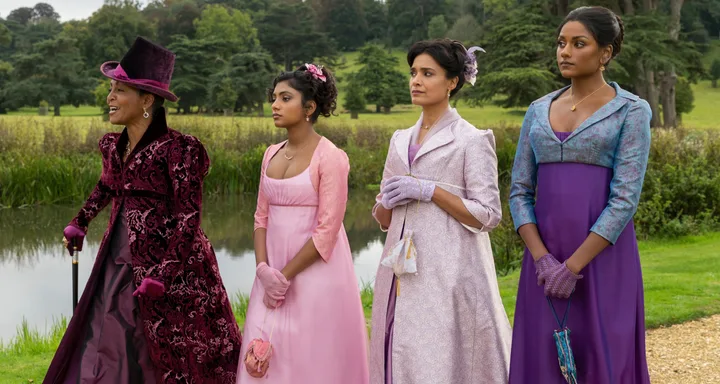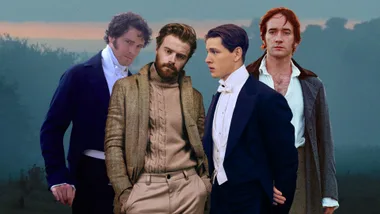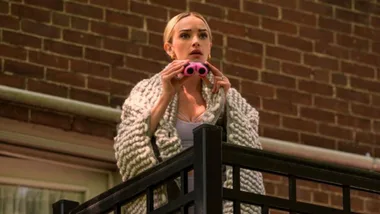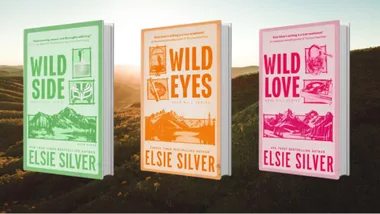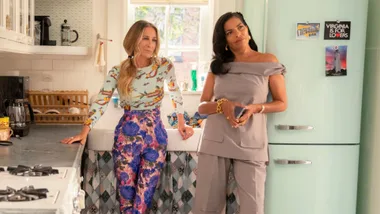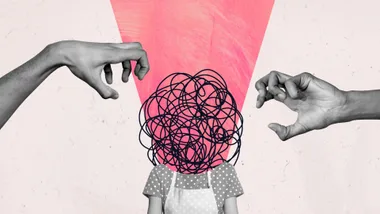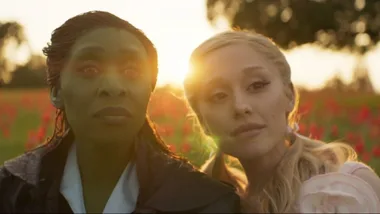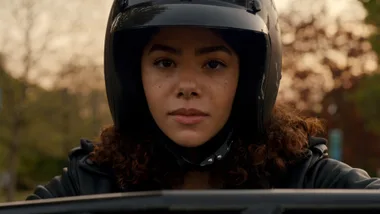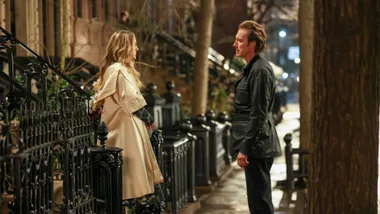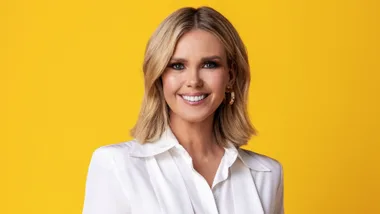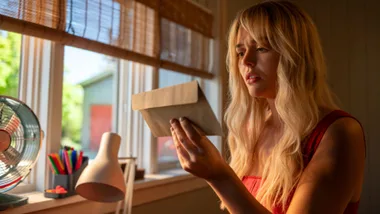If the opulent scenery, orchestral renditions of Taylor Swift hits and the mere presence of the Viscount wasn’t enough to turn your Bridgerton fascination into an unhealthy obsession, then allow us to do the honours.
While Netflix’s Regency-era series has enough drama to keep us entertained until 2024, there’s one element of the show that has left fans wanting a third season posthaste: the fashion.
Costume designers Ellen Mirojnick and Sophie Canale are the creative geniuses behind the glamorous and grandiose costuming from seasons one and two respectively, and it’s because of their impressive work that they’ve pioneered a fashion trend known as ‘Regencycore‘.
In an interview with Harper’s BAZAAR, Canale shared some insider secrets about what went into creating the stunning attire from the show’s second season, including what surprising trend she thinks could take off.
Below, we’ve rounded up fascinating facts about Bridgerton‘s jaw-dropping costuming from seasons one and two, that are sure to inspire a weekend re-watch.
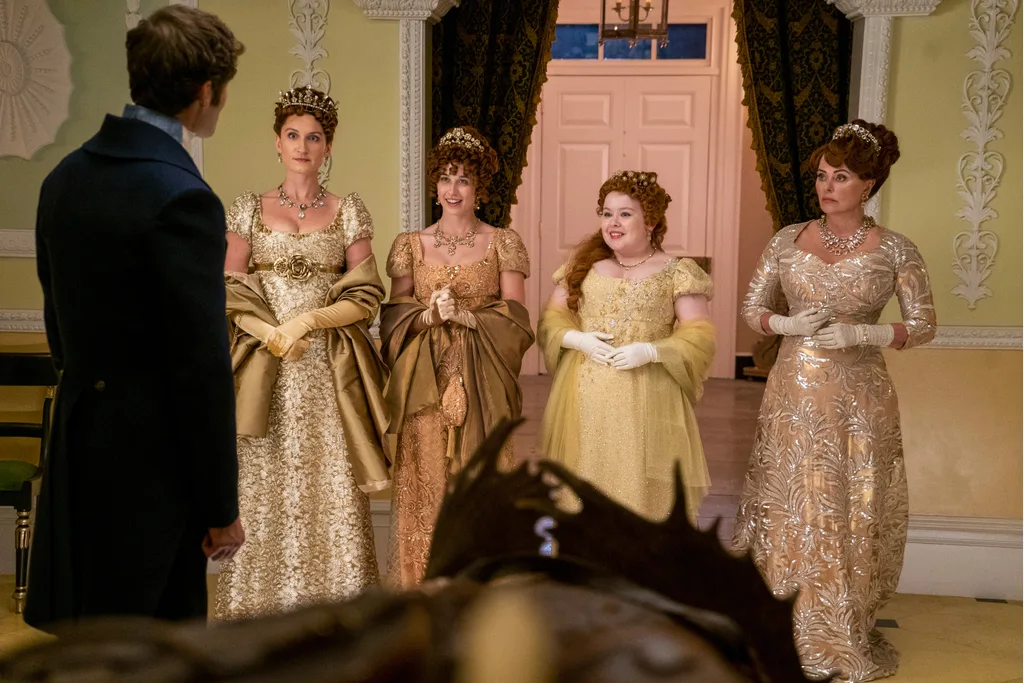
There Were Approximately 700 Costumes For Bridgerton Season 2
“There was a team of 120 people in house, and further-out workers as well,” Canale told the publication.
And it wasn’t just sewing staff who made up the extensive team, the costume department included milliners, two female cutters who each had their own team of pattern makers, a men’s tailor, four assistant costume designers, a dyer, an embellishment team and embroiderers.
“We averaged about 700 costumes, with about 160 ‘makes’ every six weeks. There is no other production like it. And for the women, each one of those costumes has a hat or hairpieces, jewellery, embroidered gloves, and shoes that are dyed to match the dresses,” she explained.
“So it’s not only dresses—it’s an entire collection with many thousands of items.”
The Sharma Family’s Indian Heritage Is Represented Through Their Costumes In Season 2
As anyone who has already binge-watched Bridgerton‘s second season would know, the latest instalment celebrates diversity even more than it did in season one. Mainly by introducing the Sharma family, the trio consists of Kate Sharma, the love interest of Viscount Anthony, her little sister Edwina and her mother Mary.
In the first episode, the audience learns that the group arrived in England from Bombay, India, to find Edwina a husband that the Sheffield family would approve of—after all, they’re paying her dowry. And while their heritage is showcased through the sisters’ sweet nicknames for each other, it was also represented through their wardrobe.
“We had a big discussion with the showrunner and producer about how to represent the Sharma family using Regency dresses,” Canale said.
“We ended up using Indian fabrics and Indian embroidery. The jewel-tone colour palettes of Kate Sharma’s costumes are important, and all the family’s jewellery is Indian inspired. Even though they’re in empire-line dresses, there are still elements of their heritage throughout.”
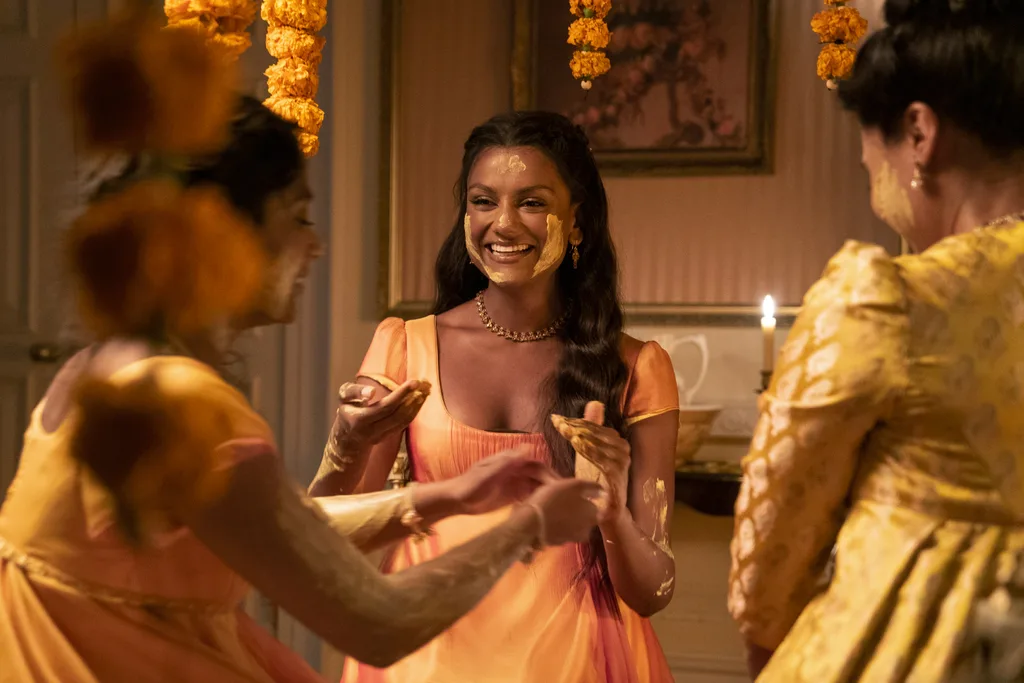
The Sharma, Bridgerton And Featherington Families In Season 2 Each Wore Their Own Type Of Jewellery
In the second season, there’s a clear difference between three families: the Sharmas, the Bridgertons and the Featheringtons. And while they all wear the same Regency-style gowns and white silk gloves, the three all come from varying backgrounds and circumstances. So, Canale thought it’d be best to differentiate between them through jewellery.
“The Bridgertons tend to be in silver,” she explained, adding, “For the Featheringtons, it’s gold. And for the Sharmas, it’s rose gold”.
“We did a lot of hairpieces, hair pins, hair decorations. And there are a few themed balls this season where the dresses are made with the same elements as the jewellery.”
Canale Believes That A New Fashion Trend Could Come Out Of Bridgerton Season Two
For this season, Canale explained that all eyes will likely be on the characters’ hair. The costume designer believes that packing each ‘do and wig—hello, Queen Charlotte—with all sorts of embellishments could see the general public doing the same, perhaps in hopes of finding their own Viscount.
“We did a lot with hair decoration this season,” she said. “Hair pins, jewellery, flowers in your hair—I think Lady Featherington has interesting headwear this season, and maybe that’s something we could see take off.”
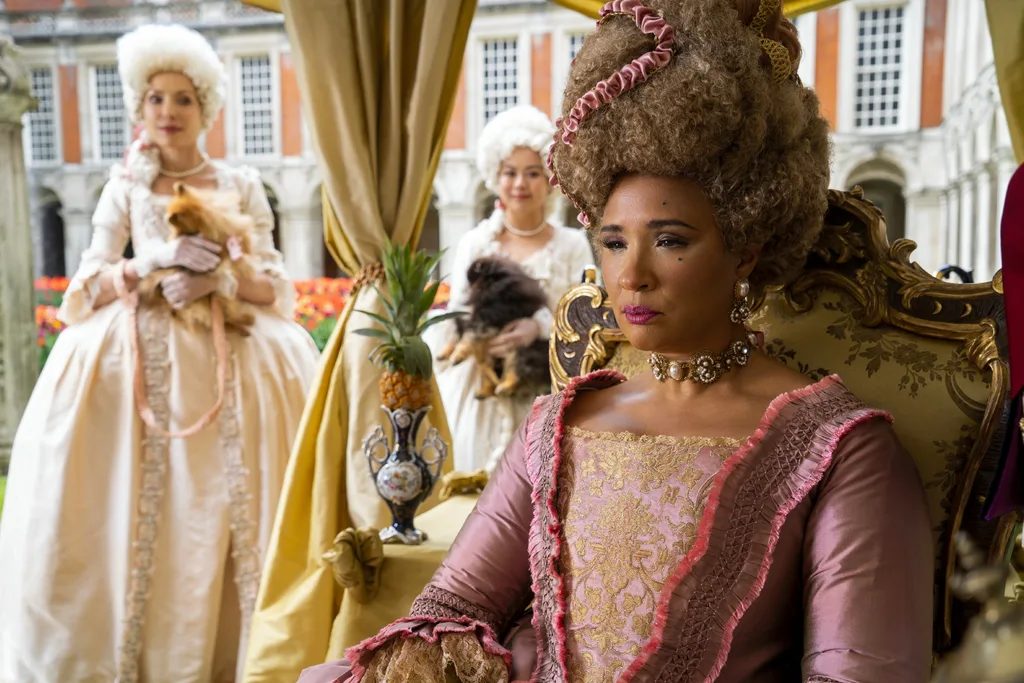
Paying homage to her incredible pieces, Netflix’s shared a featurette showing behind-the-scenes into Mirojnick’s work on the show’s first season and how she and her team created a myriad of hidden details and intricate features that super-fans were able to spot.
WATCH BELOW: Costumes of Bridgerton Featurette
As for how Mirojnick’s work on season one of Bridgerton catapulted the Regency-drama into must-watch territory, well, it involved a lot of sewing, concept building and material sourcing.
Bridgerton Season 1 Featured Approximately 7,500 Costume Pieces
In conversation with BAZAAR U.S., Mirojnick revealed that there were around 7,500 individual costume pieces rather than full outfits, such as overlays that combine to make one dress or an outerwear piece, saying:
“Basically, all together, inclusive of our principal wardrobe, there were costume pieces equalling 7,500,” Mirojnick revealed. “It’s kind of like cooking,” she explains. “You need to have the ingredients to be able to make the costume that’s necessary.”
She also explained that there were around one thousand pieces that were reserved for the principal characters alone—including items like capes and undergarments. And for leading lady Daphne Bridgerton, played by Phoebe Dynevor, she had a total of 104 costume changes alone.
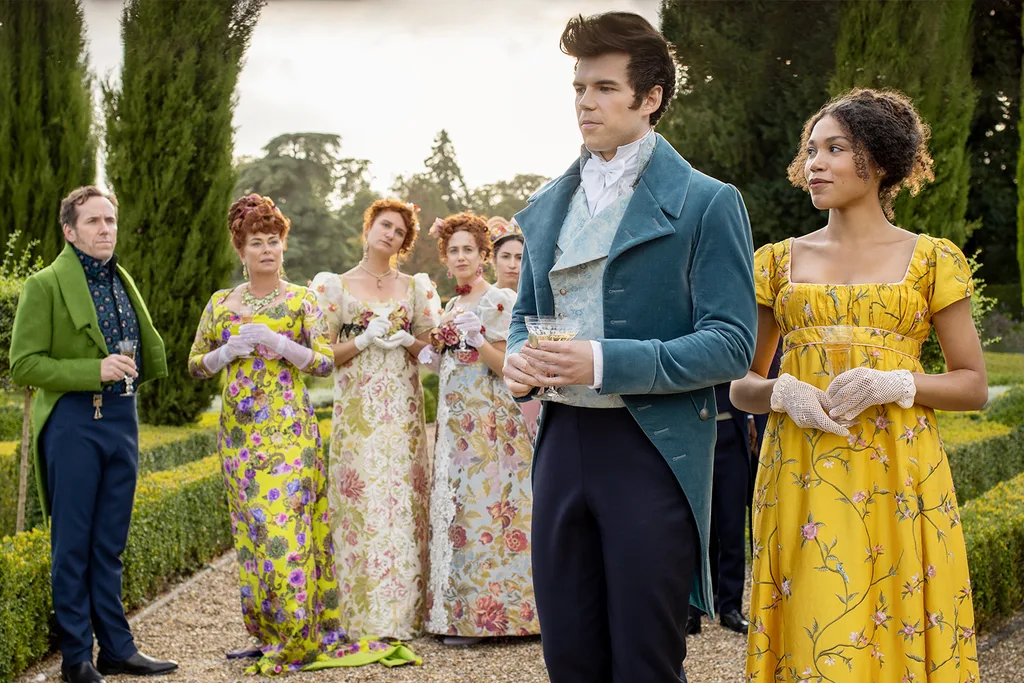
Mirojnick Wanted The First Season To Put A Modern Twist On Regency Attire
Bridgerton‘s historical accuracy is somewhat lacking, so it’s easy to see how this was done on purpose. If the historic renditions of modern songs wasn’t a giveaway, then the costumes may have been.
In a contemporary interpretation of what people would have been wearing at the time, Mirojnick chose to make the Featherington family wear floral prints in bright pinks, yellows, and oranges, considering the family is new to wealth and status.
Additionally, the heavy jewel embellishments on the gowns are more extravagant than they would have been in the actual time period.
Mirojnick wanted to overlay the look of the Regency era “with a bit of a modern sensibility, make it aspirational, intriguing, and with somewhat of a layer that would actually be very imaginative,” she told BAZAAR U.S.
“We have increased the amount of glitter, increased the amount of colour, increased the over embellishing. We have done things that actually can relate a little bit more to today’s point of view.”
Each Family Had Their Own Modern Colour Palette When It Came To Costumes In Season 1
While the opulent costuming was a visual feast, some may have noticed certain colour themes sprinkled throughout the show.
In conversation with The Zoe Report, Mirojnick revealed that the colour palette, or “bible” as she called it, was based off a current Irish artist’s work.
“We created a palette that was inspired by Genieve Figgiss paintings,” Mirojnick explained. “That colour palette was created for our entire world. It was fresh and vibrant. It was necessary to establish a difference between the Bridgerton and the Featheringtons.”
“The palette for the Bridgertons was meant to feel romantic and refined. The Featheringtons, being new to the town and not from the same societal background, were always described in the text as wearing acidic colours.” She explains. “We chose a palette to incorporate a Versace-esque feeling. We felt that was a perfect way to create the Featherington characters.”
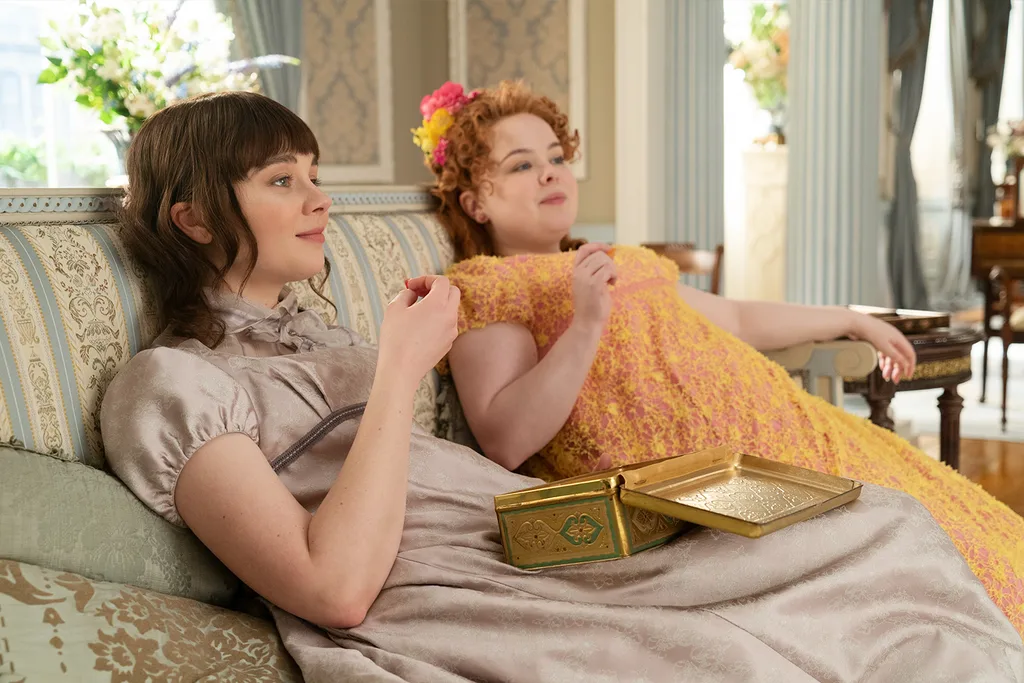
“A historical colour theme was not relevant for creating our world,” Mirojnick went on to explain. “The palette became the first step in creating our colour bible, then we went from there.”
“For example, the colour Wedgwood blue became our symbol for the Bridgertons—we used it not because it was historical, but it fit into our story.”
And the same went for season two. According to Canale, each character continued to champion their own colour palette with the attention to detail even shown in their buttons.
“The devil is in the details,” Canale told Harper’s BAZAAR. “Each character has their own certain colour palette, down to the buttons—and I chose every single one.”
Daphne’s Colour Palette Changed As She Matured After Marriage
Aside from the societal differences between the families of Bridgerton, there was even more colour play to define each character and their growth throughout the season.
“As Daphne becomes the duchess, her innocence fades and evolves,” Mirojnick explained. Daphne Bridgerton, whose romance with the Duke of Hastings was the main plot point of the season, experienced a personal change which Mirojnick wanted to convey through her costuming.
“We took her palette into a deeper and duskier tonality. It was subtle, but you feel that Daphne has become a woman.”
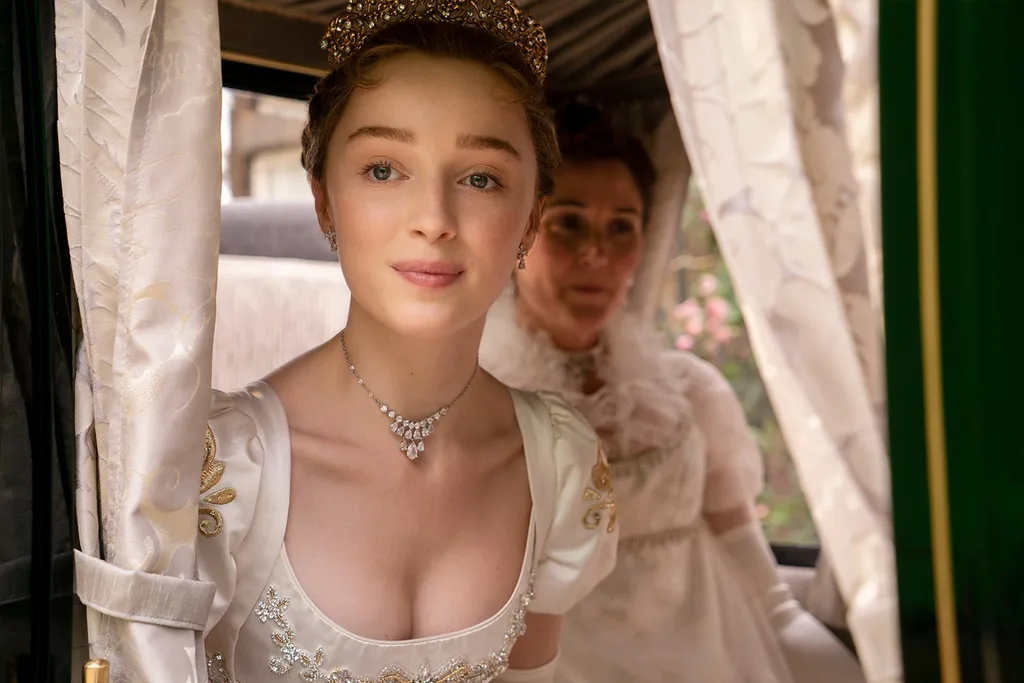
The Corsets May Have Barely Been Seen But They Were Very Important
Creating the iconic body-hugging, oxygen-depleting undergarments was famous corset maker, Mr. Pearl. And while the show’s corsets were hardly a main character, they played a vital role in how the costumes sat on each actress.
“[There are] no two bodies that are alike. And so if there is a bosom or a shape, even at the top part of the body that has to be adjusted for the costume, he knows how to create that structure to be able to give you that,” Mirojnick said of Mr. Pearl’s style unique.
“The gowns would not fall over the body if there was no structure underneath that.”
With a cheeky homage to the discomfort of corsets at the time, there was emphasis made on how painful they were to wear. And unfortunately, every female actress was made to wear one for authenticity.
“I don’t think comfort comes into the conversation,” Mirojnick revealed. “We try to make it as comfortable as possible, but it isn’t as comfortable as wearing a sports bra—no how, no way.”
To make sure their cast were comfortable, half corsets were used, which end at the top of the ribs, rather than full-body corsets, which travel down from the waist for more restriction.
Said corsets not only helped with the dress’ silhouette, but with ensuring one historical trend was achieved.
“And so the corsets were made so that there is a push-up and a blossoming effect on top of the top of the neck line,” Mirojnick said.
Thankfully, the actors quickly got used to wearing the undergarments. “But as an end result, they wore it with as much grace as I’ve ever seen. They were, I think, far more comfortable than they ever thought they’d be.”
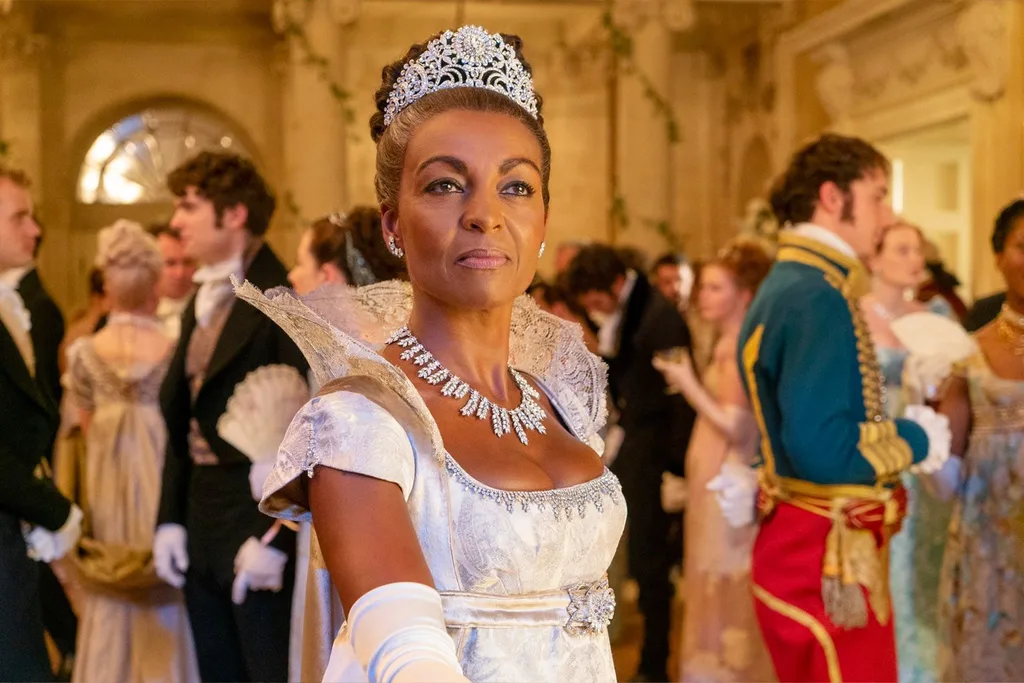
Bridgerton’s Jaw-Dropping Jewellery Collection From Season 1 Was Sourced From Around The World
Sourced from jewellery dealers in New York, Italy and the United Kingdom, Bridgerton‘s show-stopping jewels were highly sought-after.
Joining Mirojnick and her team was artisan and jewellery designer, Lorenzo Mancianti, who helped create pieces for the show.
As for the jaw-dropping tiaras, they were sourced in Italy and the U.K., with the principals’ tiaras coming from the Swarovski Archive.
“I’ve been doing this a long time and I never [saw something] like this,” Mirojnick revealed. “I guess it goes back to the days of Ben Hur and Cleopatra and those biblical epics, but now we’re in Regency England and the numbers are just as large.”
